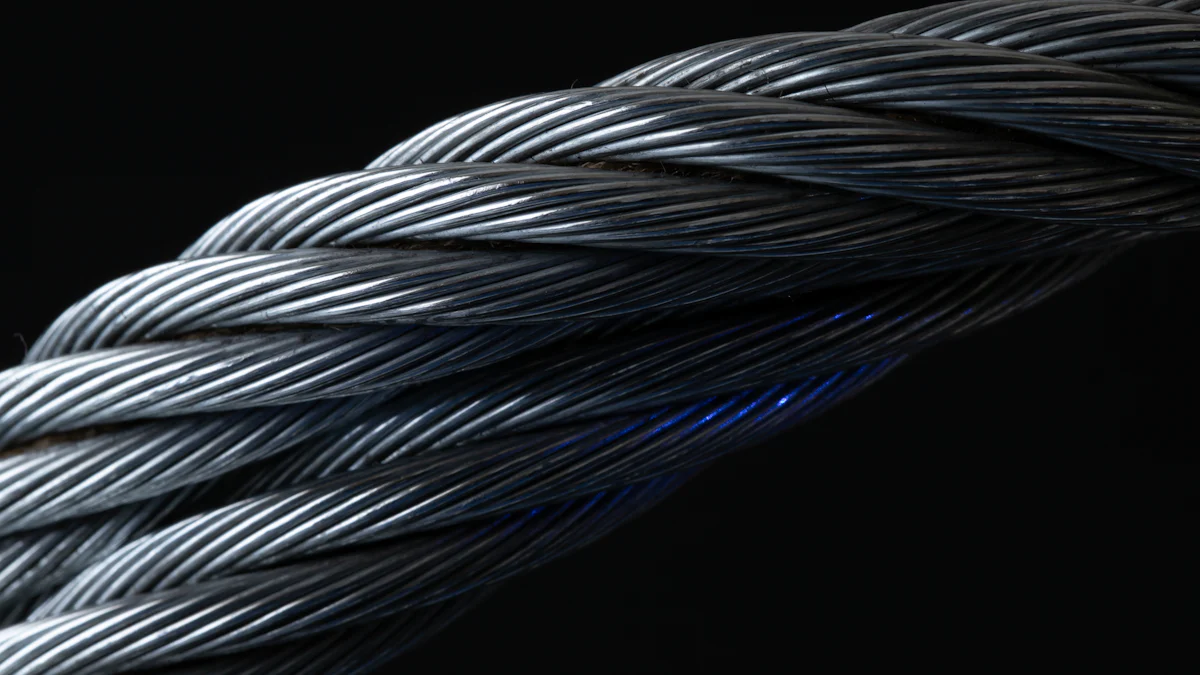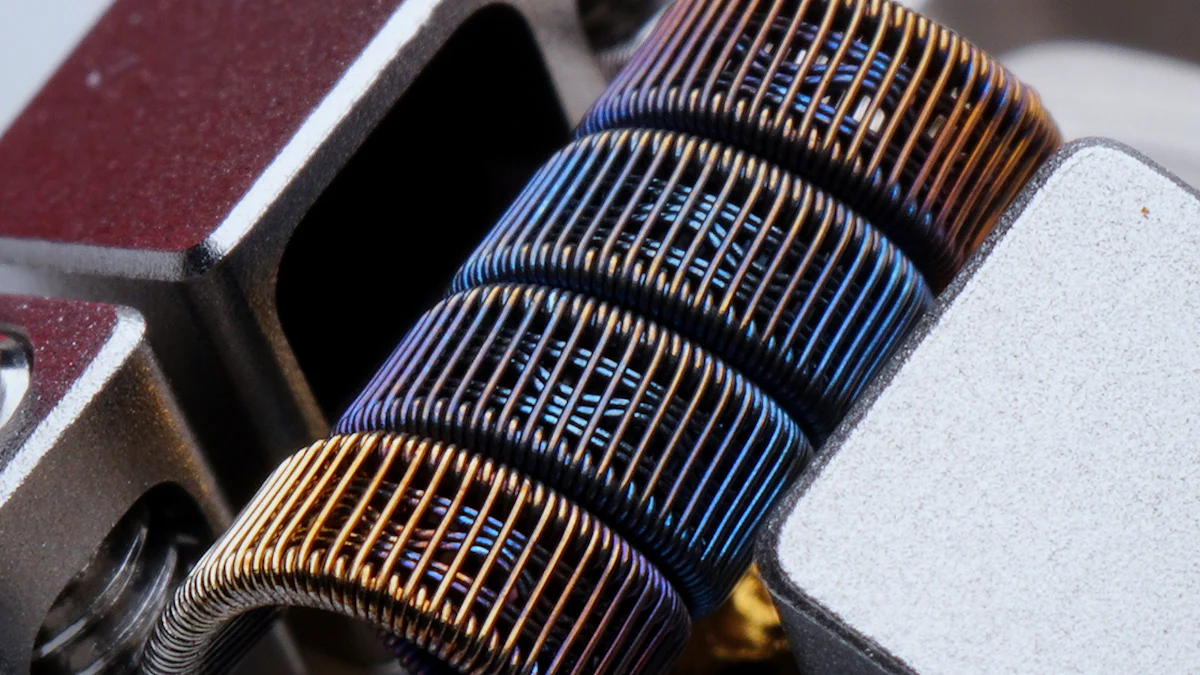
News

Fine steel wire online high frequency heating uses high-frequency induction to treat steel wires with precision. You can achieve annealing, brazing, or tempering efficiently through this method. Its clean and precise heating eliminates contamination, ensuring superior product quality. Industries rely on this process to enhance performance, reduce energy consumption, and meet modern manufacturing demands.
Key Takeaways
Fine steel wire online high frequency heating enhances efficiency and speed, allowing for continuous operations that meet high production demands without costly downtime.
This heating method ensures improved precision and quality control, delivering localized heating that targets specific areas of the wire for consistent and superior results.
Adopting high-frequency induction heating not only reduces energy consumption and operational costs but also minimizes environmental impact, making it a sustainable choice for modern manufacturing.
How Fine Steel Wire Online High Frequency Heating Works

Overview of the high-frequency induction heating process
High-frequency induction heating is a precise and efficient method for treating fine steel wires. This process uses electromagnetic induction to generate heat within the wire. When alternating current flows through a coil, it creates a magnetic field. This field induces eddy currents in the steel wire, causing it to heat up.
Several scientific principles make this process effective:
Electromagnetic induction generates heat directly in the conductive material.
The skin effect ensures that the current flows near the surface of the wire, improving heating efficiency.
Hysteresis losses in steel contribute to additional heat through rapid magnetization and demagnetization.
This combination of principles allows fine steel wire online high frequency heating to deliver consistent and localized heat treatment.
Step-by-step explanation of the heating mechanism
The induction generator produces high-frequency alternating current.
This current flows through the heating coil, creating a magnetic field.
As the fine steel wire passes through the coil, the magnetic field induces eddy currents in the wire.
These currents generate heat within the wire due to electrical resistance.
The wire's surface heats rapidly due to the skin effect, while hysteresis losses add further heat in ferrous materials.
A PLC control system monitors and adjusts the temperature to ensure precision.
This continuous process allows you to achieve annealing, brazing, or tempering with remarkable accuracy.
Key equipment and technologies, including induction generators and PLC control systems
The success of fine steel wire online high frequency heating depends on advanced equipment. Here are the main components:
The induction generator operates at frequencies exceeding 200 kHz to ensure high heating efficiency. The PLC control system automates the process, enabling remote operation and precise temperature control. This setup ensures reliability and uninterrupted operation, even at high wire speeds.
Benefits of Fine Steel Wire Online High Frequency Heating
Enhanced efficiency and speed for continuous operations
Fine steel wire online high frequency heating ensures unmatched efficiency in industrial processes. The system operates continuously, allowing you to heat fine steel wires at high speeds without interruptions. This capability is essential for industries where production demands are high, and downtime is costly. The advanced induction generators and automated controls maintain consistent performance, even when wire speeds increase. You can rely on this technology to streamline operations and meet tight production schedules.
Improved precision, quality control, and localized heating
Precision is a hallmark of fine steel wire online high frequency heating. The process delivers localized heating, targeting specific areas of the wire without affecting the surrounding material. This level of control ensures uniform heat treatment, resulting in superior product quality. Automated temperature monitoring systems further enhance accuracy, allowing you to achieve consistent results across batches. Whether you need annealing, brazing, or tempering, this technology guarantees precise and repeatable outcomes.
Energy savings, cost-effectiveness, and reduced environmental impact
This heating method is not only efficient but also environmentally friendly. High-frequency induction heating minimizes energy waste by generating heat directly within the wire. This targeted approach reduces overall energy consumption, lowering operational costs. Additionally, the process produces no harmful emissions, making it a sustainable choice for modern manufacturing. By adopting this technology, you can reduce your carbon footprint while achieving significant cost savings.
Applications of Fine Steel Wire Online High Frequency Heating

Automotive and aerospace industries for wire hardening and tempering
In the automotive and aerospace sectors, durability and precision are non-negotiable. Fine steel wire online high frequency heating plays a pivotal role in hardening and tempering wires used in these industries. You can use this process to enhance the strength and flexibility of wires, ensuring they meet the rigorous demands of high-performance vehicles and aircraft. For example, hardened wires are essential for manufacturing suspension springs, engine components, and landing gear systems. This technology ensures consistent quality, enabling you to produce components that withstand extreme conditions and prolonged use.
Electronics and telecommunications for specialized wire treatments
The electronics and telecommunications industries rely heavily on specialized wire treatments to meet their unique requirements. Fine steel wire online high frequency heating allows you to achieve precise annealing and tempering, which are critical for producing wires with specific electrical and mechanical properties. These wires are used in applications such as signal transmission, circuit boards, and connectors. The localized heating capability ensures minimal distortion, making it ideal for delicate components. By adopting this method, you can produce high-quality wires that enhance the performance and reliability of electronic devices and communication systems.
Medical and manufacturing industries for high-quality wire production
In the medical field, high-quality wires are indispensable for life-saving devices and procedures. Fine steel wire online high frequency heating ensures the production of wires with exceptional precision and reliability. You can find these wires in critical applications such as:
K-type thermocouples for IV therapy, ensuring accurate temperature control for patient safety.
Resistance heating wires in blood warming systems, preventing hypothermia during transfusions.
Insulated and uninsulated wires for extracorporeal circulation systems in cardiac surgeries.
In manufacturing, this technology supports the production of intricate components. Wire EDM cutting, for instance, relies on high-quality wires to create complex instruments like forceps and orthopedic implants. By leveraging this heating method, you can meet the stringent standards of both medical and industrial applications.
Key Considerations for Fine Steel Wire Online High Frequency Heating
Technical requirements, including frequency and power matching
For fine steel wire online high frequency heating, matching frequency and power is critical to achieving optimal performance. You need to ensure that all components work in harmony to maximize efficiency and precision. The following table outlines the essential components and their roles:
You must select a generator with a frequency exceeding 200 kHz to meet the demands of high-speed wire processing. Additionally, the power source should align with the wire's speed and material properties to ensure consistent heating.
Common challenges, such as equipment reliability and troubleshooting
Maintaining equipment reliability is essential for uninterrupted operations. High-speed wire processing can strain components, leading to wear and tear. You may encounter issues like coil overheating, power fluctuations, or inconsistent heating. Addressing these challenges requires proactive troubleshooting. For instance, monitoring the impedance matching network can help identify inefficiencies in power transfer. Regularly inspecting the work coil and cooling system ensures they function optimally. By staying vigilant, you can minimize downtime and maintain production quality.
Maintenance tips for uninterrupted operation and temperature control
Proper maintenance keeps your system running smoothly. Start by scheduling routine inspections of the work coil, power source, and cooling system. Clean the coil regularly to prevent debris buildup, which can affect heating efficiency. Check the water cooling system for leaks or blockages to avoid overheating. Calibrate the control electronics periodically to maintain precise temperature regulation. Using a PLC system simplifies monitoring and allows you to automate maintenance alerts. By following these steps, you can ensure consistent performance and extend the lifespan of your equipment.
Fine steel wire online high-frequency heating offers unmatched efficiency, precision, and quality. Its applications span industries, advancing manufacturing processes and ensuring superior performance. Emerging trends like intelligent control systems, hybrid heating technologies, and energy management promise even greater potential. By adopting this technology, you can enhance productivity, reduce costs, and stay ahead in a competitive market.
FAQ
What is the ideal frequency for fine steel wire online high-frequency heating?
The ideal frequency exceeds 200 kHz. This ensures efficient heating, especially for high-speed wire processing, while maintaining precision and consistent performance.
How does a PLC system improve the heating process?
A PLC system automates temperature control and monitors operations. It ensures precision, reduces human error, and allows remote adjustments for uninterrupted performance.
What maintenance steps should you follow for optimal equipment performance?
Inspect the work coil and cooling system regularly.
Clean debris from components.
Calibrate control electronics periodically.
Use automated maintenance alerts for efficiency.
Tip: Consistent maintenance extends equipment lifespan and ensures reliable operation.
Please give us a message